
Khao Yai National Park: Thailand's Verdant Escape
Explore Khao Yai National Park: A UNESCO World Heritage site in Thailand, perfect for wildlife enthusiasts, hikers, and those seeking a serene escape into nature.
Khao Yai National Park, Thailand's oldest and third-largest national park, offers a breathtaking escape into nature's bounty. Spanning over 2,000 square kilometers, this UNESCO World Heritage site is rich in biodiversity and scenic landscapes. The park is a haven for wildlife enthusiasts, with over 300 species of birds, elephants, deer, and even tigers calling it home. The park's diverse ecosystems, ranging from lush forests to rolling grasslands, provide an ideal backdrop for adventure and exploration. Visitors can embark on various trails that cater to all levels of hiking experience. The Haew Suwat Waterfall, made famous by the movie 'The Beach', is a must-see. The park also boasts other stunning waterfalls like Haew Narok and Pha Kluai Mai. For those who prefer a more relaxed experience, the scenic viewpoints offer panoramic vistas that are perfect for photography. The cool climate, especially in the mornings and evenings, adds to the park's charm, making it a popular getaway from the bustling city life of Bangkok. Khao Yai is also known for its rich cultural heritage. The park is dotted with historical sites and ancient temples that add a spiritual dimension to the natural beauty. Local guides often share fascinating stories about the region's history and folklore. The park's accessibility and well-maintained facilities make it a convenient destination for both day trips and extended stays. Whether you're a nature lover, a photographer, or someone seeking tranquility, Khao Yai National Park promises a memorable and enriching experience.
Local tips in Khao Yai National Park
- Visit early in the morning to catch the wildlife at their most active and enjoy the park before it gets crowded.
- Wear comfortable hiking shoes and bring plenty of water, as some trails can be challenging.
- Hire a local guide to enhance your experience with expert knowledge of the park's flora and fauna.
- Don't forget your camera; the park offers incredible opportunities for wildlife and landscape photography.
- Check the weather forecast before your visit, as heavy rains can make some areas inaccessible.
- Pack insect repellent and sunscreen to protect yourself from bugs and sunburn.
- Respect the wildlife and maintain a safe distance; feeding animals is strictly prohibited.
Khao Yai National Park: Thailand's Verdant Escape
Khao Yai National Park, Thailand's oldest and third-largest national park, offers a breathtaking escape into nature's bounty. Spanning over 2,000 square kilometers, this UNESCO World Heritage site is rich in biodiversity and scenic landscapes. The park is a haven for wildlife enthusiasts, with over 300 species of birds, elephants, deer, and even tigers calling it home. The park's diverse ecosystems, ranging from lush forests to rolling grasslands, provide an ideal backdrop for adventure and exploration. Visitors can embark on various trails that cater to all levels of hiking experience. The Haew Suwat Waterfall, made famous by the movie 'The Beach', is a must-see. The park also boasts other stunning waterfalls like Haew Narok and Pha Kluai Mai. For those who prefer a more relaxed experience, the scenic viewpoints offer panoramic vistas that are perfect for photography. The cool climate, especially in the mornings and evenings, adds to the park's charm, making it a popular getaway from the bustling city life of Bangkok. Khao Yai is also known for its rich cultural heritage. The park is dotted with historical sites and ancient temples that add a spiritual dimension to the natural beauty. Local guides often share fascinating stories about the region's history and folklore. The park's accessibility and well-maintained facilities make it a convenient destination for both day trips and extended stays. Whether you're a nature lover, a photographer, or someone seeking tranquility, Khao Yai National Park promises a memorable and enriching experience.
When is the best time to go to Khao Yai National Park?
Iconic landmarks you can’t miss
Ban Tha Chang Spring
Experience tranquility at Ban Tha Chang Spring, a hidden gem in Pak Chong District, surrounded by nature's beauty and serenity.

Primo Piazza
Discover the charm of Italy in Thailand at Primo Piazza, a picturesque village blending stunning architecture with delightful activities.

Khao Yai Art Museum
Explore the stunning Khao Yai Art Museum, a blend of contemporary art and nature near Khao Yai National Park, perfect for art lovers and tourists alike.

Pha Trom Jai Cliff
Discover the breathtaking views and serene beauty of Pha Trom Jai Cliff in Khao Yai National Park, Thailand's natural wonder.

Haew Narok Waterfall
Discover the breathtaking beauty of Haew Narok Waterfall, a stunning natural attraction in Nakhon Nayok, Thailand, perfect for nature lovers and adventure seekers.

Khao Yai National Park Visitor Center
Explore the stunning landscapes, diverse wildlife, and rich ecosystems at Khao Yai National Park Visitor Center – your gateway to adventure.

Khao Yai 30 KM. View Point
Discover the stunning vistas at Khao Yai 30 KM View Point, a serene escape within Thailand's breathtaking Khao Yai National Park.

Scenical World
Discover the thrill of Scenical World, an amusement park and water park in Nakhon Ratchasima offering adventure, fun, and unforgettable family experiences.

Pete Maze
Discover the enchanting Pete Maze in Nakhon Ratchasima, a whimsical tourist attraction filled with artistic sculptures and lush gardens.

Lago di Khao Yai
Discover the tranquil beauty of Lago di Khao Yai, an enchanting orchard and dining destination in Nakhon Ratchasima, offering nature and relaxation.

Khao Yai Speedkart
Discover the excitement of go-kart racing at Khao Yai Speedkart, a top tourist attraction in Nakhon Ratchasima, Thailand, surrounded by stunning nature.

Khao Yai Farm Village
Experience the charm of Khao Yai Farm Village, where nature, fun, and local flavors come together for an unforgettable family adventure.

The Blessed Nicholas Bunkerd Kitbamrung Church, Khao Yai
Experience the spiritual and architectural beauty of The Blessed Nicholas Bunkerd Kitbamrung Church in Khao Yai, a serene escape in Thailand's lush landscapes.
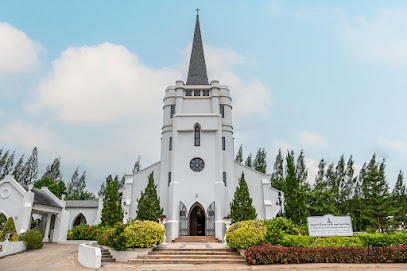
Secret Art Garden
Discover the enchanting blend of art and nature at Secret Art Garden in Pak Chong District, a tranquil retreat in Nakhon Ratchasima.

Nong Phak Chi Wildlife Watching Tower
Explore the wonders of wildlife at Nong Phak Chi Tower in Khao Yai National Park, Thailand's premier nature destination, perfect for birdwatching and outdoor adventures.

Unmissable attractions to see
Farm Chokchai
Experience the charm of Farm Chokchai, where dairy delights meet family fun in the scenic landscapes of Nakhon Ratchasima.

Ban Tha Chang Spring
Experience the serene beauty of Ban Tha Chang Spring, a hidden gem in Nakhon Ratchasima, perfect for relaxation and nature exploration.

Khao Yai Thieng Windmill
Discover the breathtaking beauty of Khao Yai Thieng Windmill, a serene park perfect for nature lovers and photography enthusiasts in Nakhon Ratchasima.

Pak Chong Night Market
Explore the vibrant Pak Chong Night Market, where delicious street food and unique local crafts come together for an unforgettable Thai experience.

Thongsomboon Club
Discover the beauty and adventure of Thongsomboon Club, a family-friendly tourist attraction in Nakhon Ratchasima, Thailand, offering endless fun and relaxation.
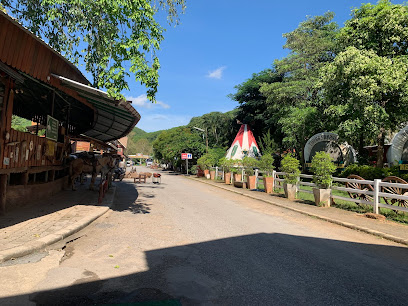
Luang Phor Thuat Khao Yai, The largest in the world
Explore the breathtaking Luang Phor Thuat, the world's largest Buddhist statue, set amidst the natural beauty of Khao Yai National Park.

Bonanza Exotic Zoo
Explore the breathtaking Bonanza Exotic Zoo in Nakhon Ratchasima, Thailand, a captivating sanctuary for wildlife enthusiasts and families alike.

Flora Park
Explore the enchanting Flora Park in Wang Nam Khiao, a floral paradise that offers tranquility, beauty, and a perfect escape into nature.

Khao Yai Art Museum
Discover the harmonious blend of art and nature at Khao Yai Art Museum, a must-visit cultural treasure in Thailand's stunning national park.

Wat Pa Phu Hai Long
Discover the tranquil beauty of Wat Pa Phu Hai Long, a Buddhist temple offering spiritual enrichment and stunning architecture in Nakhon Ratchasima.

Hokkaido Flower Park Khaoyai
Discover the vibrant beauty of Hokkaido Flower Park in Khaoyai, Thailand, where stunning floral displays meet serene landscapes and local delights.
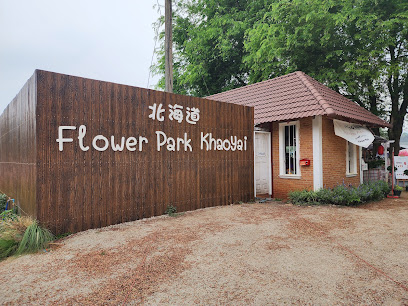
Khao Yai 30 KM. View Point
Discover the stunning vistas at Khao Yai 30 KM View Point, a breathtaking spot in Khao Yai National Park that promises unforgettable views and serene nature experiences.

Pete Maze
Discover the magic of Pete Maze in Nakhon Ratchasima, where adventure meets nature in a captivating maze experience.

Khao Yai Speedkart
Experience the thrill of kart racing at Khao Yai Speedkart, surrounded by Thailand's stunning landscapes and family-friendly atmosphere.

Khao Yai Farm Village
Explore Khao Yai Farm Village: where nature meets amusement in Thailand's scenic countryside, perfect for family fun and fresh local produce.

Essential places to dine
The Chocolate Factory Khao Yai
Experience the ultimate chocolate haven at The Chocolate Factory Khao Yai - where every bite is a sweet delight amid stunning scenery.
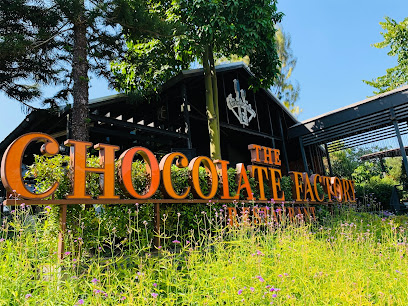
Midwinter Khaoyai
Discover exquisite dining at Midwinter Khaoyai, where gourmet cuisine meets stunning natural beauty in Thailand's renowned Khaoyai region.

Krua Khao Yai Restaurant
Experience authentic Thai flavors at Krua Khao Yai Restaurant near Khao Yai National Park - a culinary treasure in nature's embrace.

Yungkhaow Khaoyai
Experience authentic Thai cuisine at Yungkhaow Khaoyai in Pak Chong District - where flavor meets tradition in a beautiful setting.

PenLaos (Khaoyai)
Discover authentic Thai cuisine surrounded by the breathtaking beauty of Khaoyai at PenLaos.

Prime 19 Khao Yai
Experience culinary excellence at Prime 19 Khao Yai, where gourmet dishes meet exceptional wines in a stunning natural setting.

Lookkai Cafe Restaurant Khao Yai
Experience authentic Thai cuisine amidst the stunning landscapes of Khao Yai at Lookkai Cafe Restaurant – where flavors meet nature.

The Witches Brew Restaurant Khao Yai
Experience the magic of dining at The Witches Brew Restaurant Khao Yai – where whimsical decor meets delectable cuisine.

River Curve Khao-Yai restaurant & cafe
Experience authentic Thai cuisine surrounded by nature at River Curve Khao-Yai - a must-visit restaurant in Thailand's scenic paradise.
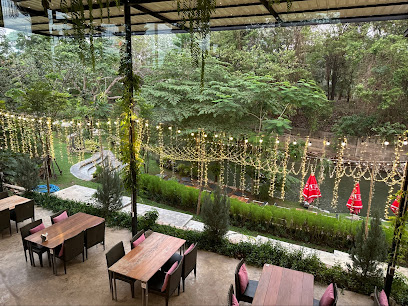
Timber Tales Cafe and Bistro Khaoyai
Experience culinary bliss amidst nature at Timber Tales Cafe and Bistro Khaoyai - a haven for food lovers in Thailand's breathtaking landscapes.

E.A.T. @ Khao Yai | Bar & Bistro
Discover exquisite flavors at E.A.T. @ Khao Yai amidst breathtaking natural landscapes.

LAMAYA KHAOYAI
Experience exquisite dining at Lamaya Khaoyai - where culinary delights meet breathtaking views in the heart of Thailand's natural beauty.

Tatsu
Experience authentic Japanese cuisine at Tatsu in Nakhon Ratchasima – where tradition meets taste!

SALASA HILL HALAL RESTAURANT
Discover the essence of halal dining at Salasa Hill Halal Restaurant – where authentic flavors meet warm hospitality in Nakhon Ratchasima.

The Park Khaoyai Cafe and Restaurant
Discover culinary delights at The Park Khaoyai Cafe & Restaurant amidst the stunning landscapes of Thailand's Khao Yai National Park.

Markets, malls and hidden boutiques
Khao Yai National Park
Discover the breathtaking landscapes and rich biodiversity of Khao Yai National Park, a UNESCO World Heritage Site in Thailand, perfect for nature lovers and adventurers alike.

Premium Outlet Khaoyai at Pak Chong
Explore Premium Outlet Khaoyai for unbeatable deals on top international brands amidst stunning natural beauty.

Lago di Khao Yai
Discover the enchanting beauty and culinary delights of Lago di Khao Yai, where nature meets exquisite dining in a serene setting.

The Pandora Camp Khao Yai
Experience the perfect blend of relaxation and adventure at The Pandora Camp Khao Yai, a charming retreat in Thailand's stunning natural landscapes.

The Birder's Lodge Farmers market
Experience the vibrant flavors and culture of Nakhon Ratchasima at The Birder's Lodge Farmers Market, a treasure trove for food lovers and culture seekers.

The Canyon Khao Yai - เดอะแคนยอน เขาใหญ่
Discover the perfect blend of adventure and relaxation at The Canyon Khao Yai, where nature meets comfort in Thailand's stunning landscapes.

Lotus's express Khao Yai
Discover local flavors and essentials at Lotus's Express Khao Yai, a grocery store nestled in Thailand's stunning natural beauty.

ไร่องุ่นเกรปเฮ้าส์ เขาใหญ่ Grapes House Khao Yai
Explore the exquisite vineyards, fresh produce, and serene landscapes at Grapes House Khao Yai, a must-visit destination for every traveler.

Tops Daily Palio Khao Yai
Discover local flavors and essentials at Tops Daily Palio Khao Yai, your perfect convenience store in the heart of Thailand's nature haven.

Lor Ling Coffee Hut
Discover the serene ambiance and delightful brews at Lor Ling Coffee Hut, a must-visit coffee shop in Mu Si for all coffee lovers.

Rai Lookmee, Blackberries
Explore the serene beauty of Rai Lookmee, Blackberries, a picturesque coffee shop in Nakhon Ratchasima, offering exquisite brews and delightful treats.

ถูกดี มีมาตรฐาน โทน โป่งตาลอง
Discover the charm of local convenience at ถูกดี มีมาตรฐาน โทน โป่งตาลอง, your essential stop for quality products in Nakhon Ratchasima.

La Tosca @Portofino Khaoyai
Experience the sweet taste of Italy at La Tosca, Khaoyai's charming bakery, offering a delightful assortment of pastries and artisanal breads.

Thippiman Shop
Experience the vibrant flavors of Thailand at Thippiman Shop, a local grocery store in Pak Chong offering fresh produce and traditional ingredients.
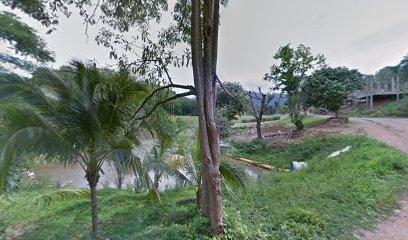
Rin's Secrets @The Park Khaoyai
Explore the charm of Rin's Secrets @The Park Khaoyai, a delightful gift shop offering unique Thai handicrafts and souvenirs in a beautiful setting.

Essential bars & hidden hideouts
The Chocolate Factory Khao Yai
Discover a chocolate lover's paradise at The Chocolate Factory Khao Yai, where gourmet indulgence meets breathtaking views in Thailand's scenic heart.

Prime 19 Khao Yai
Experience exquisite dining and fine wines at Prime 19 Khao Yai, where culinary artistry meets a stylish ambiance, perfect for tourists.

Memories Beach Bar
Discover the laid-back vibe of Memories Beach Bar in Khao Lak, where refreshing drinks and stunning ocean views await you.

Monkey Bar khao lak
Unwind at Monkey Bar Khao Lak - your go-to spot for refreshing drinks, live music, and unforgettable nights in Thailand's tropical paradise.

The Witches Brew Restaurant Khao Yai
Discover the whimsical charm of The Witches Brew Restaurant Khao Yai, where delightful cuisine meets enchanting decor in a stunning natural setting.

Studer Restaurant The Best Steak in Khao Yai
Experience the finest steaks and vibrant dining atmosphere at Studer Restaurant in Khao Yai, a culinary gem for all food lovers.

Fat Shark Bar
Discover the vibrant nightlife at Fat Shark Bar in Khuekkhak - where unique decor and refreshing drinks create an unforgettable experience.

Mr. Chay Bar
Experience the local nightlife at Mr. Chay Bar in Phang-nga, a lively destination for drinks, music, and unforgettable moments.

Piranha Bar
Experience the vibrant atmosphere of Piranha Bar, a beachfront gem in Phang-nga, offering refreshing drinks and stunning ocean views.

DREAM BAR
Discover the vibrant nightlife at DREAM BAR in Khuekkhak, Phang-nga, offering a wide range of drinks and lively entertainment for every visitor.

Moose's Pub
Experience the vibrant nightlife of Phang-nga at Moose's Pub, where great drinks and friendly locals create an unforgettable evening.

The Rock Bar
Experience the vibrant atmosphere at The Rock Bar in Phang-nga, where stunning views meet delightful drinks and lively music.

Tiki Bar Bang Niang
Experience the vibrant flavors of Tiki Bar Bang Niang, where grilled delights meet tropical cocktails in a lively atmosphere.

Biker Bar
Experience the perfect blend of relaxation and flavor at Biker Bar in Khao Lak, where great food meets a welcoming atmosphere.

Some might say (Rooftop Pakchong)
Discover breathtaking views and a vibrant beer hall experience at Some Might Say Rooftop Pakchong, where every sip is a celebration.

Local Phrases about Khao Yai National Park
-
- Helloสวัสดี
[sawasdee] - Goodbyeลาก่อน
[laa kon] - Yesใช่
[chai] - Noไม่
[mai] - Please/You're welcomeโปรด/ยินดีต้อนรับ
[prode/yindee ton rap] - Thank youขอบคุณ
[kop khun] - Excuse me/Sorryขอโทษ
[khor tod] - How are you?คุณสบายดีไหม?
[khun sabai dee mai?] - Fine. And you?สบายดีครับ คุณล่ะ?
[sabai dee khrap khun la?] - Do you speak English?คุณพูดภาษาอังกฤษได้ไหม?
[khun poot phasa angkrit dai mai?] - I don't understandฉันไม่เข้าใจ
[chan mai khao jai]
- Helloสวัสดี
-
- I'd like to see the menu, pleaseขอดูเมนูหน่อยครับ
[khor doo menu noi khrap] - I don't eat meatฉันไม่กินเนื้อ
[chan mai gin nuea] - Cheers!ชนเครื่องดื่ม!
[chon khreung deum] - I would like to pay, pleaseขอจ่ายเงินหน่อยครับ
[khor jai ngern noi khrap]
- I'd like to see the menu, pleaseขอดูเมนูหน่อยครับ
-
- Help!ช่วยด้วย!
[chuai duay] - Go away!ไปหายไป!
[pai hai pai] - Call the Police!โทรตำรวจ!
[thor tamruat] - Call a doctor!โทรหมอ!
[thor mor] - I'm lostฉันหลงทาง
[chan long tang] - I'm illฉันไม่สบาย
[chan mai sabai]
- Help!ช่วยด้วย!
-
- I'd like to buy...ฉันต้องการซื้อ...
[chan tong kaan seu...] - I'm just lookingฉันแค่ดูอยู่
[chan kae doo yu] - How much is it?ราคาเท่าไร?
[ra kha thao rai?] - That's too expensiveแพงเกินไป
[paeng gein pai] - Can you lower the price?ลดราคาได้ไหม?
[lot ra kha dai mai?]
- I'd like to buy...ฉันต้องการซื้อ...
-
- What time is it?เวลาเท่าไรแล้ว?
[wela thao rai laeo?] - It's one o'clockเที่ยงคืนแล้ว
[thiang keun laeo] - Half past (10)10 ทุ่มครึ่ง
[sib tum krung] - Morningเช้า
[chao] - Afternoonบ่าย
[bai] - Eveningเย็น
[yen] - Yesterdayเมื่อวาน
[meua wan] - Todayวันนี้
[wan nee] - Tomorrowพรุ่งนี้
[phrung nee] - 1หนึ่ง
[neung] - 2สอง
[song] - 3สาม
[sam] - 4สี่
[see] - 5ห้า
[ha] - 6หก
[hok] - 7เจ็ด
[jet] - 8แปด
[paet] - 9เก้า
[gao] - 10สิบ
[sip]
- What time is it?เวลาเท่าไรแล้ว?
-
- Where's a/the...?...อยู่ที่ไหน?
[... yu tee nai?] - What's the address?ที่อยู่อย่างไร?
[tee yu yang rai?] - Can you show me (on the map)?มีที่แผนที่ไหม?
[mee tee paen tee mai?] - When's the next (bus)?รถเมล์ถัดไปเวลาเท่าไร?
[rot mel tud pai wela thao rai?] - A ticket (to ....)ตั๋ว (ไป...)
[dtua (pai...)]
- Where's a/the...?...อยู่ที่ไหน?
History of Khao Yai National Park
-
Khao Yai National Park, established in 1962 as Thailand's first national park, is part of the larger Dong Phayayen-Khao Yai Forest Complex, a UNESCO World Heritage Site. The park spans over 2,168 square kilometers across four provinces: Nakhon Ratchasima, Saraburi, Prachinburi, and Nakhon Nayok. Its diverse landscapes include dense forests, grassy plains, and rolling hills, making it a crucial area for biodiversity and ecological studies.
-
Archaeological evidence suggests that humans have inhabited the Khao Yai region for thousands of years. Stone tools and pottery fragments indicate the presence of early hunter-gatherer communities. These ancient inhabitants utilized the rich natural resources of the area for sustenance and shelter, leaving behind remnants that offer valuable insights into prehistoric life in Thailand.
-
During the colonial era, Khao Yai served as a strategic location for military activities due to its dense forests and challenging terrain. In the early 20th century, the area began to see more development, including the construction of roads and railways to facilitate access. This period marked the beginning of Khao Yai's transformation from a remote wilderness to a more accessible destination.
-
Khao Yai was officially designated as Thailand's first national park on September 18, 1962, under the National Park Act B.E. 2504. The establishment of the park was driven by the need to protect its unique ecosystems and the diverse array of flora and fauna that inhabit the area. This milestone marked the beginning of Thailand's commitment to conservation and the protection of its natural heritage.
-
Since its establishment, Khao Yai National Park has been a focal point for conservation efforts. It is home to over 3,000 species of plants, 320 species of birds, and numerous mammals, including elephants, tigers, and gibbons. Conservation programs have been implemented to protect endangered species and restore degraded habitats. The park's status as a UNESCO World Heritage Site further underscores its global ecological importance.
-
Khao Yai holds deep cultural and spiritual significance for local communities. The park is dotted with sacred sites, including shrines and temples, where locals perform traditional rituals and ceremonies. These cultural practices highlight the harmonious relationship between humans and nature, and the reverence with which the natural landscape is regarded.
-
In recent decades, Khao Yai has become a popular destination for both domestic and international tourists. Activities such as hiking, wildlife watching, and visiting waterfalls attract thousands of visitors each year. Efforts have been made to balance tourism with conservation, ensuring that the park's natural beauty and biodiversity are preserved for future generations. Sustainable tourism practices are promoted to minimize the environmental impact and support local communities.
Khao Yai National Park Essentials
-
Khao Yai National Park is located about 180 kilometers northeast of Bangkok. The easiest way to get there is by car, which takes approximately 3 hours. You can rent a car from Bangkok or hire a private taxi. Alternatively, you can take a bus from Bangkok's Mo Chit Bus Terminal to Pak Chong, the closest town to the park. From Pak Chong, you can take a local songthaew (shared pickup truck) or arrange for a taxi to reach the park's entrance.
-
Within Khao Yai National Park, the most convenient way to get around is by car or motorbike, which allows you to explore the park at your own pace. There are also guided tours available that include transportation. For those without a vehicle, local songthaews and taxis are options, though they can be less flexible. Bicycles can be rented at some locations within the park for short-distance travel.
-
The official currency in Thailand is the Thai Baht (THB). Credit cards are accepted at larger hotels, restaurants, and some shops, but it's advisable to carry cash for entrance fees, local eateries, and smaller vendors. ATMs are available in Pak Chong, so it's recommended to withdraw sufficient cash before entering the park.
-
Khao Yai National Park is generally safe for tourists. However, visitors should be cautious of wildlife, especially elephants and monkeys, and maintain a safe distance. Always follow park regulations and guidelines. Pak Chong is a relatively safe town, but like any tourist destination, it's wise to be vigilant and safeguard your belongings. Avoid dark, isolated areas at night.
-
In case of emergency, dial 191 for police assistance or 1669 for medical emergencies. The park has its own ranger stations where you can report incidents and seek help. It's advisable to have travel insurance that covers medical emergencies. Basic first aid services are available at the park's visitor centers, but for serious medical issues, the nearest hospital is in Pak Chong.
-
Fashion: Do wear comfortable, breathable clothing suitable for hiking and outdoor activities. Avoid overly revealing clothing. Religion: Do show respect at any religious sites by dressing modestly and removing your shoes when required. Public Transport: Do be respectful and patient when using local transport. Don't eat or drink on public transport. Greetings: Do greet people with a 'wai' (a slight bow with hands pressed together). Eating & Drinking: Do try local dishes and accept food offerings graciously. Don't waste food, as it is considered disrespectful.
-
To experience Khao Yai like a local, visit the local markets in Pak Chong for fresh produce and regional specialties. Engage with park rangers and locals, who can offer valuable insights and tips. Don't miss visiting the various waterfalls and viewpoints within the park. For a unique experience, consider a night safari to see nocturnal wildlife. Lastly, try the local wine from the vineyards near Khao Yai, as the region is known for its wine production.
Trending Landmarks in Khao Yai National Park
-
Ban Tha Chang Spring
-
Primo Piazza
-
Khao Yai Art Museum
-
Pha Trom Jai Cliff
-
Haew Narok Waterfall
-
Khao Yai National Park Visitor Center
-
Khao Yai 30 KM. View Point
-
Scenical World
-
Pete Maze
-
Lago di Khao Yai
-
Khao Yai Speedkart
-
Khao Yai Farm Village
-
The Blessed Nicholas Bunkerd Kitbamrung Church, Khao Yai
-
Secret Art Garden
-
Nong Phak Chi Wildlife Watching Tower
Nearby Cities to Khao Yai National Park
-
Things To Do in Ayutthaya
-
Things To Do in Bangkok
-
Things To Do in Samut Prakan
-
Things To Do in Pattaya
-
Things To Do in Rayong
-
Things To Do in Battambang
-
Things To Do in Kanchanaburi
-
Things To Do in Trat
-
Things To Do in Hua Hin
-
Things To Do in Siem Reap
-
Things To Do in Koh Kong
-
Things To Do in Loei
-
Things To Do in Sukhothai
-
Things To Do in Udon Thani
-
Things To Do in Ubon Ratchathani










